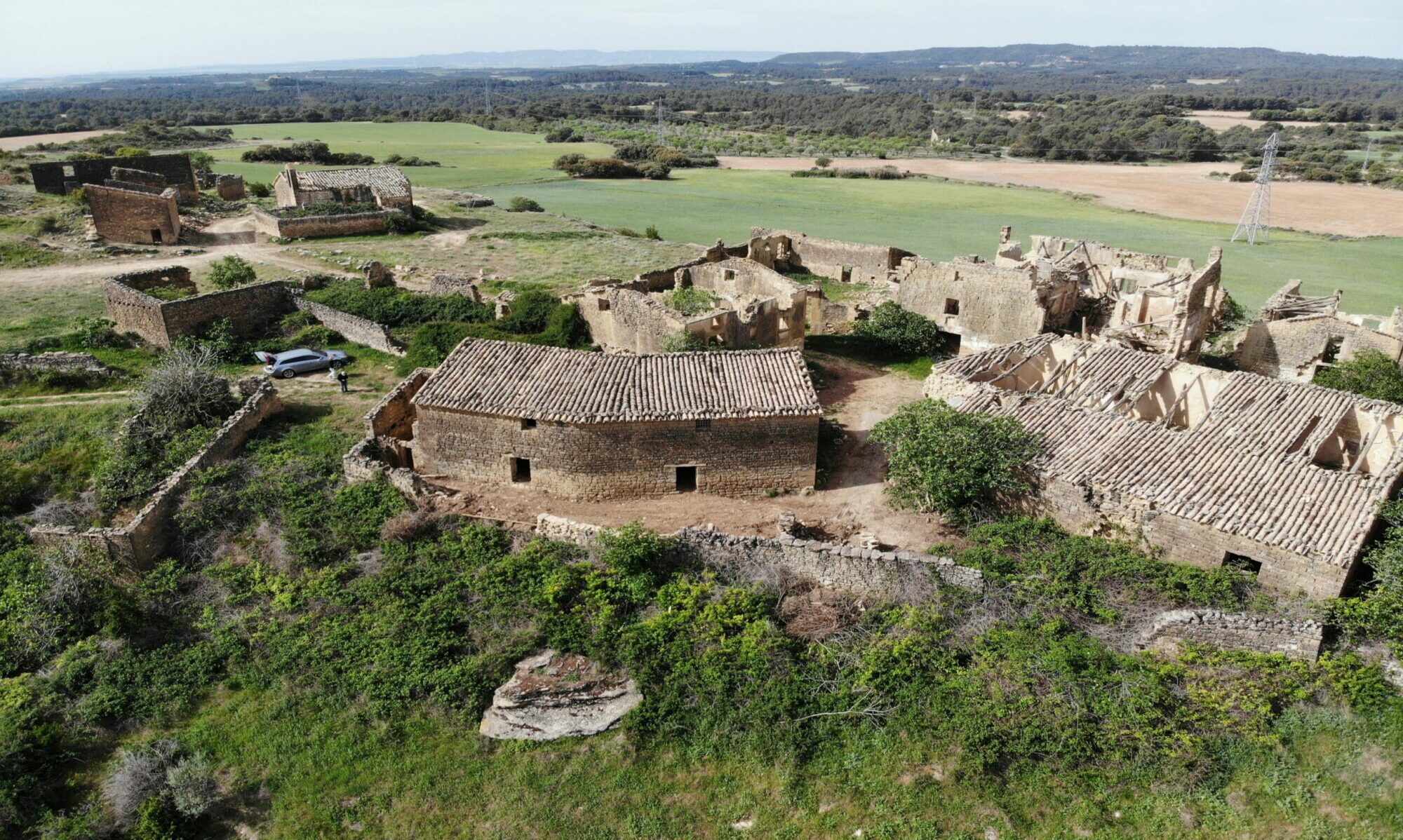Public Buildings
Church of Santa Águeda:
The church has a structure of ashlar walls, a nave, with an addition as a sacristy. The vault of the nave is a tiled vault of racks, and the roof is made of wood with ceramic tiles. Outside there is another enclosure between walls where the cemetery is located.
The bell tower is in good condition, but it does not have a bell.
Despite having visible damage, it is in good condition. The wooden roof is maintained and the masonry walls are in good condition. The cemetery is completely overgrown and cannot be accessed.
Inside, the partitioned vault of the nave has a crack at the top, presumably stabilized. The interior stucco is degraded and preserves some paintings related to religious use, although there is a graffiti that covers them.



Private buildings
The state of the private buildings is dilapidated. Only one of them preserves the walls, the roof and the reed floors in their entirety. The rest only partially conserve the exterior façades, interior partitions and reveal the approximate distribution of openings, but all have lost their roof and in their current state present a high risk of collapse, especially façades that have been completely isolated, without any bracing element.
Among the ruins, although it is not entirely accurate to determine the use of the building, there are between 8 and 11 houses, with various auxiliary structures for agricultural or livestock use, such as warehouses and corrals. All these structures are also in a state of ruin.




Infrastructures
Road and access
Access to the town is via dirt roads from the core of Ardisa, in relatively good condition. The town’s own road is also dirt, without any type of surface treatment and only the tracks of vehicles and cyclists who frequent the area mark the paths.
Electricity
There is a medium voltage power line about 100 meters from the town that previously supplied the town, as there is a building that was formerly a transformer, currently in disuse and disconnected from the grid. The medium voltage network also supplies Casas de Esper.
Water
There is no type of drinking or non-potable water supply infrastructure, nor a sanitation network. There are several runoff wells and a pond that collects rainwater and is used as a trough.
In addition to this there is a covered cistern, which has lost one of its facades and the roof.

